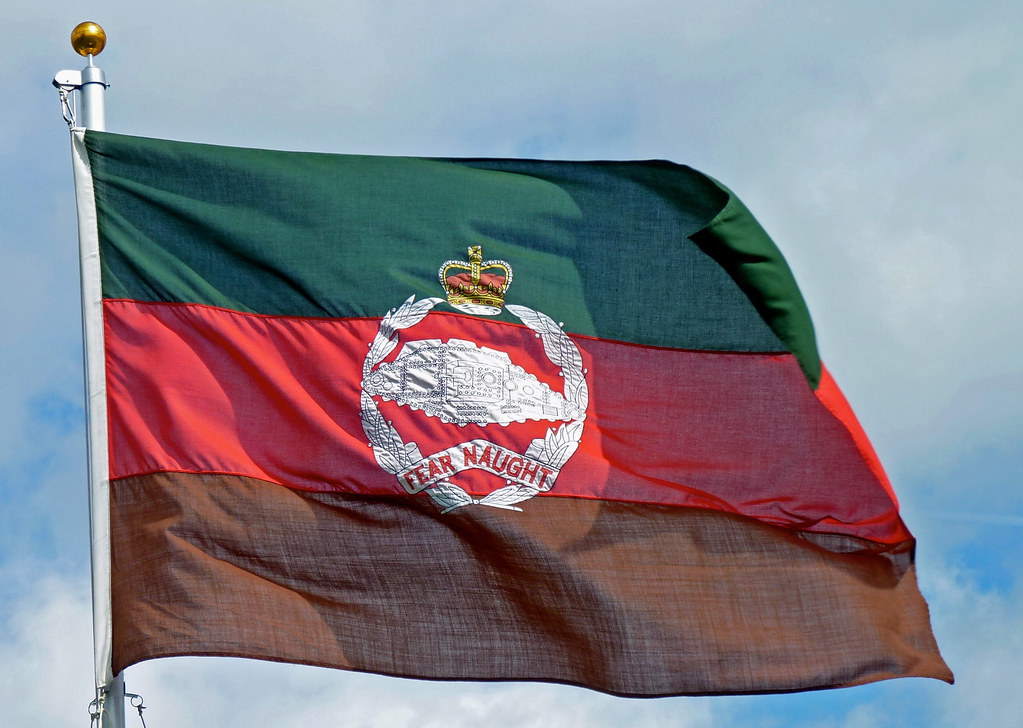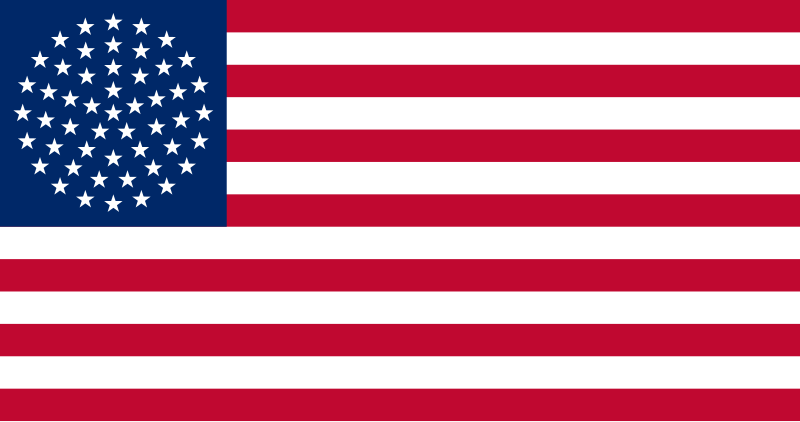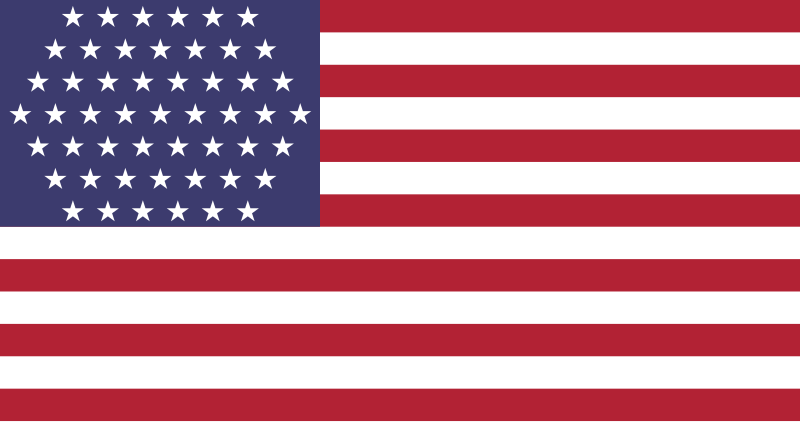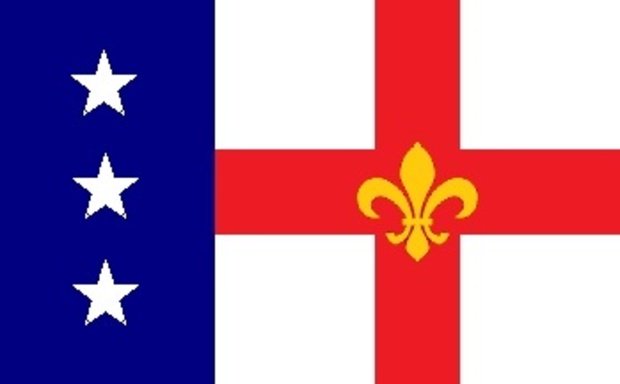Another post on the colours and uniforms of the
Boys' Brigade (BB). The current system of company colours is that each company (in the UK at least) has a Queen's Colour in the form of a Union Flag defaced with the BB emblem. And a Company Colour (HM the Queen is the patron of the BB) which is either a blue ensign with BB emblem in the fly and and the name of the company in banners surrounding it. Or alternatively a St Andrew's Saltire (the brigade has its origins in Scotland) with the BB emblem in the top quarter and the company name on a circle in the bottom quarter:
 |
| Queen's Colour |
 |
| Company colour (ensign) |
 |
| alternative Company Colour (St Andrew's Saltire) |
The problem with these is that they are very text heavy, and text is something that should b kept to a minimal on any type of flag, and avoided if possible. The fact that it is also displayed on banners rather than the field of the flag makes it hard to distinguish when the flag is moving at any distance. The second is the small badge place in a decorative circle with the name around it. It might look good as a badge, but flags are moving objects and static badges like this, especially small and over detailed don't work well for moving objects.
I redesigned the layout for company colours:
First off the Queen's Colour. I didn't do much however I modified it to look more like Queen's Colour and less like a defaced Union Jack. The Union Flag is heraldically correct (the white fimbriation is minimal) as it often is in ceremonial standards. The central badge is also ensigned with a crown. As it is the Queen's Colour it makes sense to depict the symbol of the Queen's authority. It also makes it look more an official Queen's Colour and less like a defaced Union Jack. In this example I used the
St Edwards Crown but the
Crown of Scotland could also be used on Scottish flags. The Company number is below in roman numerals (most companies have names like 4th Londonderry or 1st Glasgow, even if it is the only BB company in the town it will still have a number). The Queen's colour only applies to UK companies, companies in the Republic of Ireland have the option of using the national tricolour instead, this is undefaced or unmarked in anyway.
Next the Company colour. I dropped the Union Canton, as I seen no need for a Union Jack to appear in the company colour if the Queen's Colour is a Union Flag. I did however keep the ensign layout in mind. I though the main thing that makes unit/branch flags is a unit/branch insignia or local/affiliated symbolism. So in the canton is a shield this could depict either the coat of arms (escutcheon only) of the local municipality or in cases were municipal districts have merged the former municipal arms, or if the affiliated church has its own unique heraldic insignia (as some Anglican churches do) this could be used (it must he a heraldic type insignia not a corporate style logo). Below is the company number in roman numerals. The full name is still used however one should be able to tell the company the flag belongs to by looking at the numeral and shield. The Brigade badge occupies the centre field, this is large with minimal detail to enable it to standout mote.
Next is the design for Battalion/district colours:

I thought as its a Christian organisation, it would be appropriate for battalion/district colours to be based on the crosses of/attributed too the patron saint of the region they're from. English battalions have the Cross of St George, Scottish the Saltire of St Andrew, Welsh the Cross of St David, and Northern Irish and Irish battalions use the saltire of St Patrick. The main identifying factor is a again a local coat of arms, preferably different to the one used on company colours, although in some cases where a battalion covers a single municipality there could be exceptions. In English, Welsh and Irish flags the cross is defaced with the BB emblem and the local coat of arms is placed in the canton. Whereas in Scottish and Northern Irish flags the badge is placed above the saltire and the coat of arms below. In all regions the battalion colour would be used in conjunction with the Queen's colour (or national tricolour in the Republic of Ireland) of the host company.
Same time as designing flags I was playing about with uniforms so I might aswell include them here. The boy's Brigade has had numerous uniforms that have changed quite a lot since its foundation:
The current uniform of blue shirt and tie (white shirt for officers) is a little bit minimist for the oldest uniformed christian youth organisation. So here is my proposal:
 |
| Open in new tab to see detailed full size image |
I haven't went for a radical change, its still a shirt and tie based uniform, however I have done some things to make it more regimental. I kept the characteristic light blue shirt although I did consider a darker colour as dark blue stains can easily be seen on them if the shirt gets wet. The shirt also has shoulder straps, this is for lanyards and sashes, but primarily for the type of armband. badges earned are displayed on an armband. This has been a dark blue fabric on which the badges are pined, fastened into place by a velcro strap around the arm. There are a couple of problems that can be encountered. One is that the strap can stick out and look unsightly, the other is that the armband can slip down the arm, particularly during marching when you swing your arms. I propose a brassard type armband that covers the arm from elbow to shoulder, where the shoulder strap goes through a loop thus restricting its ability to move up or down the arm. As well as badges this brassard can display rank insignia and the company name. A regional flag and battalion or district name patch is worn on the upper left arm. The shirt also has a name tag and an BB badge embroidered on a navy circle so it stands out. Khaki boyscout type trousers are worn as these look a little more formal. The tie is a simple blue tie with the Brigade emblem.
Junior (lance corporal to corporal) Non Commissioned Officers (NCOs) wear exactly the same uniform the only distinguishment being the
chevrons on their brassard. However once promotion to senior (Sergeant and Staff Sergeant) NCO comes there are some slight differences to the uniform as well as the rank insignia. A single gold stripe appears on the tie and white lanyard is worn around the left shoulder. Staff Sergeants also wear a scarlet sash. This is a tradition in the BB that has largely been dropped in recent times which I think is a shame. At this senior stage the badges such as the
Duke of Edinburgh's Awards and
Presidents and
Queen's Badges should be being worked for and if eared are worn on an armband on the left arm.
I personally never liked the white officer's shirt, I think it looks more like an ordinary dress shirt than a uniform. So I changed the colour to tan, this again is I am sorry to say based on Boyscout uniforms. Rank insignia is displayed on slides on the shoulder straps. There are some slight differences between warrant officers and lieutenants. Warrant officers wear a blue and white lanyard and have two gold bars on their tie. There is also a white ring around the BB badge on both the shirt and tie. warrant officers who have done King George VI youthwork training to become a lieutenant have a gold and blue lanyard, and a gold ring around the BB badge as well as three stripes on their tie. These are the only officer ranks in the BB other ranks such as company captain are brevet ranks with those in that position reverting to lieutenant when they leave the post. Likewise battalion President and brigade level positions are considered as appointments rather than ranks. Therefor Captains wear the same uniform as a lieutenant the only difference being the insignia on his or her shoulder slides.
Caps have largely been dropped by most BB companies in the British Isles however I think caps are one of the things that distinguish the BB from other uniformed youth organisations like the Scouts. I did consider a khaki cap to match the trousers however I though it looked very militaristic so I changed to a dark blue one but with a khaki ridge and top. Officer traditionally wear glengarry caps which is a reference to the BB's Scottish origins. The caps are of course are only worn indoors when on parade.
Kilts may be worn on formal occasions however they should be in the
Boys' Brigade tartan as recorded by the Scottish tartans authority. Alternatively the similar
Sir William Smith tartan or in the case of Northern Ireland and the Republic the
solid saffron tartan may be worn. Pipe bands are free to chose their own tartan.
The rank insignia is simplistic. Starting at one chevron (Lance Corporal) with the max being four (Staff Sergeant). Likewise the officers wear bars on their shoulder slides. A warrant officer wearing a single blue bar. Lieutenant wearing two, and Captains three. Until Presidents and department heads. They wear three bars but they are gold rather than blue to distinguish them from a captain. Regional Presidents are the same but also have the BB badge. Outdoors uniform is slightly different:
Outdoor dress consists of the same uniform as indoor uniform, but with a blue jumper with cap worn. Brassards, arm bands and sashes are worn on/over the jumper. For foul weather a coat is worn. It is less formal brassards and sashes aren't worn over it, NCOs may wear rank insignia on shoulder slides if they wish, but this isn't a requirement.
I redesigned some of the badges and the layout:
Top ones on the right arm are the main badges. Physical, community and skills awards. At present different badges are awarded for the different levels. However I think it is better to denote this by placing boarders on the badge. Level 1 is the badge itself, red level 2, White level 3 and gold level 4. I redesigned the compass badge to a more heraldic compass design. I also added a specialist badge (in this case a bugle horn for a bugler) for musicians drummers and pipers will have depictions of their instruments, where as other musicians would wear a bard's harp. Duke of Edinburgh's Awards, Presidents badge and Queens Badge (Founders Badge in the Republic of Ireland) are worn on the left arm band.































.svg/270px-Royal_Coat_of_Arms_of_the_United_Kingdom_(Government_in_Scotland).svg.png)




.svg/2000px-Royal_Badge_of_Wales_(1953).svg.png)
.svg/2000px-Royal_Badge_of_Wales_(2008).svg.png)
















